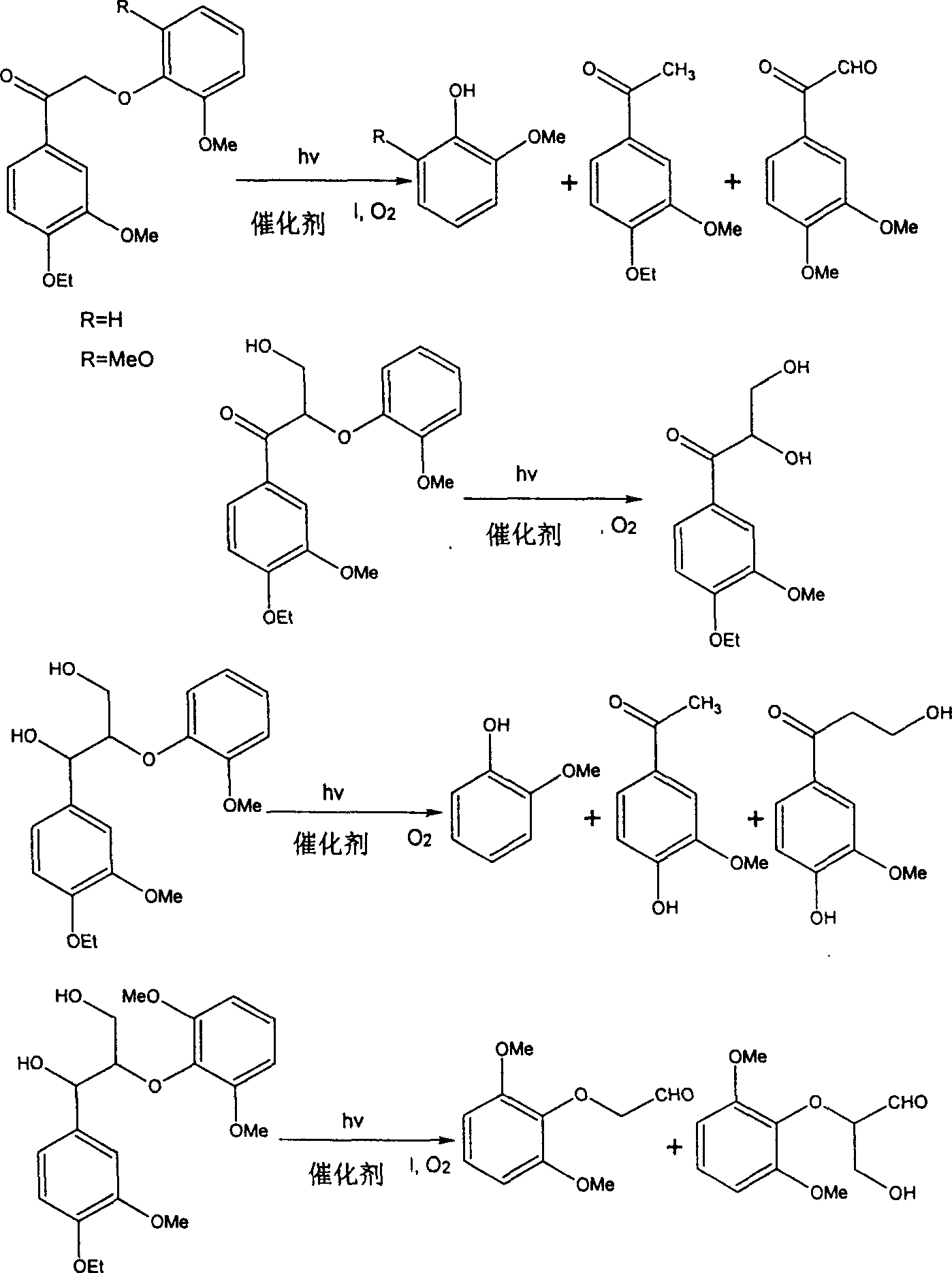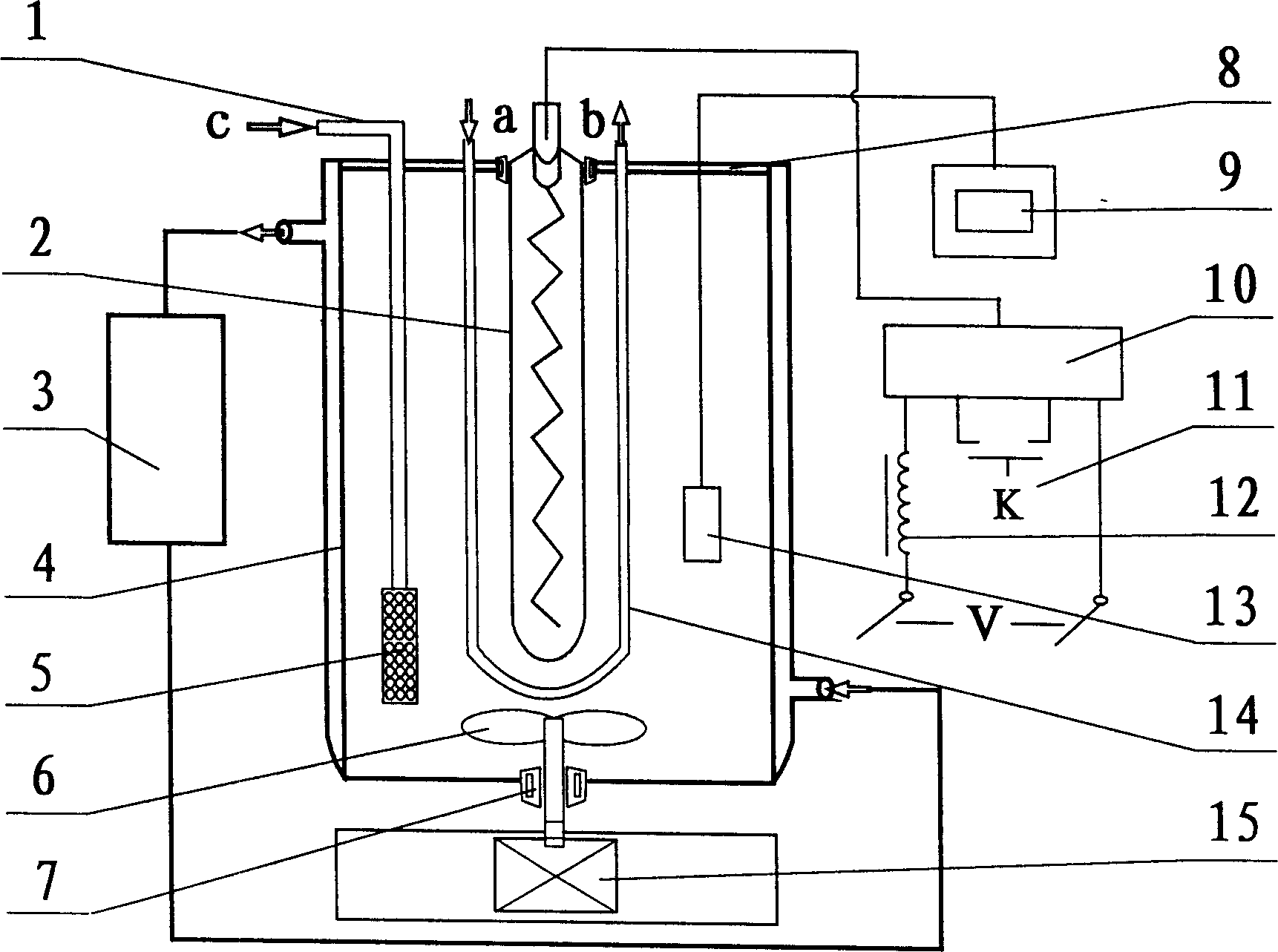Photochemical paper pulp bleaching method and device
A photochemical and pulp technology, applied in the field of pulping and papermaking, can solve the problems of high requirements on corrosion resistance, inability to close circulation of bleaching wastewater, and large pollution, and achieve high physical strength, low requirements for anti-corrosion performance, and a degree of delignification. high effect
- Summary
- Abstract
- Description
- Claims
- Application Information
AI Technical Summary
Problems solved by technology
Method used
Image
Examples
Embodiment 1
[0037] Embodiment 1, after paper pulp is dispersed, add water to make the suspension of 0.5-5% concentration, through the 0.05-1% EDTA solution pretreatment of 15-60 minute by absolute dry paper pulp weight content, join in a photochemical bleaching reactor Main equipment, adjust the pH value of the reaction system with sodium hydroxide solution to 8-12, add catalyst rose bengal, hydrogen peroxide, and titanium dioxide, the concentration is 0.05-1% of the absolute dry pulp weight content, and place it in the photochemical bleaching The 500W sodium lamp light source in the main equipment is irradiated, and the photochemical bleaching reaction occurs through the catalytic action of the catalyst. The reaction temperature is 30°C, and the bleaching reaction time is 8 hours. After the reaction, the residual lignin in the pulp is removed to obtain the required whiteness. , and then get bleached standby pulp after washing.
Embodiment 2
[0038] Embodiment 2, after paper pulp is dispersed, add water to make the suspension of 2% concentration, through the 0.05-1% DTPA solution pretreatment of 15-60 minute by absolute dry paper pulp weight content, join the main equipment of a photochemical bleaching reactor , adjust the pH value of the reaction system with lye to be 8-12, add the catalyst phlox red (PH), sulfoaluminum, zinc phthalocyanine and sodium silicate whose concentration is 0.5% of dry pulp weight content, 0.3% Titanium dioxide is irradiated by a 1500W mercury lamp light source placed in the main equipment of photochemical bleaching, and through the catalytic action of the catalyst, a photochemical bleaching reaction occurs. The reaction temperature is 80°C, and the bleaching reaction time is 3 hours. lignin to obtain the desired brightness, and then washed to obtain bleached standby pulp.
Embodiment 3
[0039] Example 3, after the pulp is dispersed, add water to make a suspension with a concentration of 1%, after 15-60 minutes of soaking pretreatment, add it to the main equipment of a photochemical bleaching reactor, and adjust the pH value of the reaction system with calcium hydroxide 8-12, add catalyst eosin (EO), and hydrogen peroxide, titanium dioxide, the concentration is 0.05-1% of absolute dry pulp weight content, through the 800W sodium lamp light source that is placed in the main equipment of photochemical bleaching, through catalyst The photochemical bleaching reaction occurs, the reaction temperature is 20°C, and the bleaching reaction time is 10 hours. After the reaction, the residual lignin in the pulp is removed to obtain the required brightness, and then the bleached pulp is obtained after washing.
PUM
 Login to View More
Login to View More Abstract
Description
Claims
Application Information
 Login to View More
Login to View More - R&D
- Intellectual Property
- Life Sciences
- Materials
- Tech Scout
- Unparalleled Data Quality
- Higher Quality Content
- 60% Fewer Hallucinations
Browse by: Latest US Patents, China's latest patents, Technical Efficacy Thesaurus, Application Domain, Technology Topic, Popular Technical Reports.
© 2025 PatSnap. All rights reserved.Legal|Privacy policy|Modern Slavery Act Transparency Statement|Sitemap|About US| Contact US: help@patsnap.com



